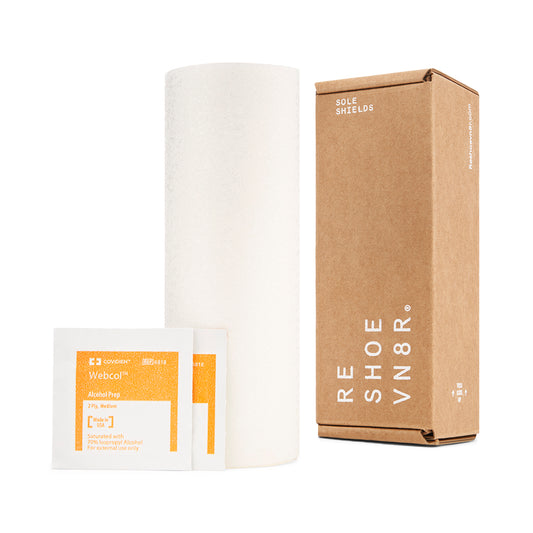How to Restore 25-Year-Old Air Jordan 1
Restoring 25-year-old Chicago Jordan 1
Welcome to this absolute masterclass on how to restore a pair of 25-year-old Jordan 1s that are falling apart. Vick has been scouring eBay for the perfect shoe to show you, and he finally found it.
Introducing the Air Jordan 1 Chicago from 1994. Yes, this shoe is from nearly 10 years after the OG Jordan 1 made its debut, and it’s not in very good condition. Sneakerheads and collectors alike have been clamoring for the best way to restore older Air Jordan 1s, and Vick has it down to a science.
Make sure you watch the whole video and then check back here for some additional insights on the restoration of this pair of ‘94 Chicago Jordan 1s.
How to Sole Swap a Jordan 1
We get this question quite often because the sole is usually the first thing to go on older Jordan 1s. And if you don't have a sole, you can’t wear the shoe…you see why this is a problem? The midsole on our ‘94 Jordan 1s isn’t crumbling (yet), but the age hasn’t been very nice to the traction on the bottom.
The first step in any sole swap is finding the right donor shoe. For ours, we’ll be using a brand new pair of Jordan 1 Lows. And yes, this will destroy the new shoes, but it’s going to be worth it if it means we can make the ‘94 Chicago 1s wearable again.
Start by removing the stitching with a pick or another sharp tool. If you’re planning on reusing the stitching later, as Vick did in the video, make sure to be methodical as you perform this step. Once the stitching is removed, it’s time to pull out the acetone. Pour a bunch of acetone directly into the bottom of the shoes and let them sit for a while. This will start to break down the adhesion of the glue. After a few hours, you should be able to pull the shoes apart, albeit with a decent amount of force.
And there you have it, a pair of donor soles have been secured!
Before you do anything else, make sure you prep the donor soles for surgery by removing any of the remaining glue. Vick did this step with both acetone and a Dremel tool. You can use the same methods to prep the bottom portion of the upper too.
Now it’s time to check the fitment of the sole and upper. As you can see in our video, the two pieces didn’t sit flush with each other, so Vick did a lot of work to shave down the sole for a better fit. If required, you should do this very carefully. If you take too much material, you’ll mess it up entirely. Remove a little bit at a time until you find that perfect fit.
Once you have the fit in a place where you’re satisfied, it’s time for glue. Only move onto this step if you’re ready because once you glue them together, you won’t want to take them apart again and risk ruining the upper or donor soles.
What are you waiting for? Stick them together already! Vick likes to use Barge SuperStik Cement as his bonding agent of choice, but you can use whatever you prefer…having a favorite glue like Vick is a little weird.
Another Sole Saved

And just like that, your sole has been swapped. Wasn’t that easy? Okay, not really, but at least you know to give it a go. It’s good to know that this takes practice…you’re not going to get it right on the first try, and that’s okay. Practice on some beater shoes before you start moving on to big projects like this ‘94 Chicago Jordan 1.
Speaking of the Chicago 1s, look at how good these turned out! Vick did some other touch-ups and cleaned the entire shoe using the RESHOEVN8R Essential Kit, but the sole swap was easily the star of the show here. Now they’re wearable and look fantastic, just what we were going for.
Would you sacrifice a brand new pair of shoes to restore an older pair as Vick did here? Head over to Youtube and let us know your thoughts.
Reshoevn8r Blogs
Shop RESHOEVN8R Products
-
ESSENTIAL SHOE CLEANING KIT
Regular price $34.88 USDRegular priceUnit price per -
SIGNATURE SHOE LAUNDRY CLEANING KIT
Regular price $49.88 USDRegular priceUnit price per -
 17% OFF
17% OFFSOLE SHIELDS
Regular price From $24.88 USDRegular priceUnit price per$29.88 USDSale price From $24.88 USDSale -
 33% OFF
33% OFFWEEKEND SNEAKER TRAVEL BAG
Regular price $299.88 USDRegular priceUnit price per$449.88 USDSale price $299.88 USDSale







